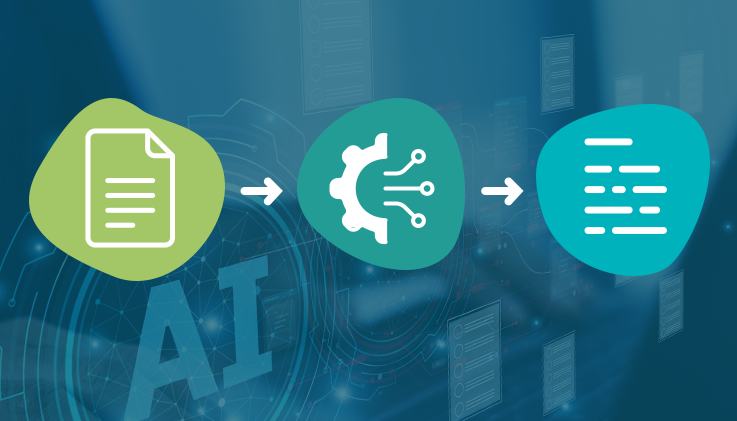Those who are interested in the growing field of customer care and service face a persistent question perennially. That is, how to reduce customer service response time.
Customers seek a customer-centric mindset from any brand that prioritizes their well-being and tries to ensure a frictionless journey. They expect fast response times, contextual engagement and communication across multiple channels, consistent and reliable service delivery overall, and easy-to-use self-service tools. All these contribute to addressing customer queries as quickly as possible.
Faster response time is a critical aspect of effective customer service. With faster response times, businesses can enhance customer satisfaction, build stronger relationships, and ensure a positive overall experience.
According to Forrester, 78% of clients will buy and stick with a company that responds and answers their questions accurately and quickly. Also, addressing sales queries with a fast response reduces the sales rep's roadmap and encourages customers to make quick purchase decisions.
What do we make out of this statistic? A quick and efficient response can lead to higher customer satisfaction and loyalty, while a slow response can lead to frustration and even loss of business.
Also read: Deliver Human-Centered CX in a Tech-Powered World
Importance of speed: Reduce customer service response time
Poor quality of service and support is the number one cause for consumers to switch brands at unprecedented rates. The top causes of frustration in customer service are:
- Having to contact the company multiple times for the same reason.
- Being on hold for a long time when contacting a company.
- Waiting for a response after requesting help from a live agent.
- Having to repeat the same information to multiple support agents.
Customer service has become the most essential brand differentiator. It brings repeat sales, boosts retention, and contributes to your bottom line.
Reducing customer service response time improves the buyer’s journey and ensures a frictionless experience between the brand and its clients.
But how do you reduce your customer service response time when you have thousands of support tickets to attend to?
Before discussing the nitty-gritty of how to reduce customer frustration due to poor service and support, let us answer the
following questions:
- Why does customer service response time matter to businesses?
- What are the consequences of a business that responds slowly to customer issues?
- What is the ideal response time according to customers?
Why does customer service response time matter to businesses?
The time it takes for your customer support staff to respond to a customer’s question is known as customer service response time. Average first response time is one of the most crucial customer service reports to understand your performance.
It can help you make your customers happy and enhance your brand’s reputation, but when done correctly, it can also improve efficiencies throughout your entire organization.
You can address or resolve customers’ issues faster by reducing service response times. You are also likely to start engaging with your customers without making them wait for a longer duration. Overall, you can master the skills of providing prompt service and ensuring quality as well as precision.
What happens when a business responds slowly to customers?
Time is a critical factor in measuring customer service interaction quality. If a customer contacts you for help, it is likely they are already frustrated. Making customers wait for help compounds an already bitter customer experience.
Consider this statistic from HubSpot: 33% of customers are most frustrated waiting on hold, and 33% are most frustrated by having to repeat themselves to multiple support reps. Statista research says that 12% of Americans rate their number one service frustration as “lack of speed.”
What is the ideal response time for customers?
Consumers expect companies to respond to them in real time. 90% of consumers rate an immediate response as essential when they have a customer service question. So the best time to respond to these queries is as soon as your support center receives the customer’s complaint or issue.
A SuperOffice study shows that most companies take approximately 12 hours to respond to a customer’s email. Thanks to smartphones, customers' response time expectations have drastically reduced.
Brands leverage service level agreements (SLAs) to meet customer expectations and adhere to promised service response times. Besides reducing costs and decreasing your support center’s response time, SLAs are very useful in improving the quality of customer service and engagement.
Also read: Why are SLAs Critical To Managing Customer Expectations?
The need of the hour
Customers are likely to take their business elsewhere if they feel neglected, have an immediate need for a service that you fail to deliver, or do not appreciate your work style.
Good customer service representatives can make or break customer relationships, so prioritizing customer messages and service requests is imperative.
So, what is the way forward for your company’s customer support department to reduce customer service response time? Your support agents must be empowered to ensure faster response time and satisfying customer experiences. They must be well-equipped with tools and technologies that ultimately assist them in providing the desired service your customers expect.
Having a skilled workforce is not enough
More than a skilled team is required to ensure your business excels in offering excellent customer experience (CX) as well as an unparalleled employee experience (EX). Your workforce, especially support agents in support centers, also needs the assistance of intelligent tools to excel in their daily activities.
Organizations using intelligent automation as an augmentation to optimize workflows stand to gain the most. The potential benefits of dependable and feature-rich helpdesk software powered by AI include:
- Automating processes.
- Empowering service teams with instant and accurate answers.
- Reducing support times.
- Improving customer experiences.
Let us look at this statistic: McKinsey’s Customer Care Survey has found that the top three priorities for business leaders over the next 12 to 24 months will be retaining and developing the best people, driving a simplified customer experience (CX) while reducing call volumes and costs, and building their digital care and advanced analytics ecosystems.
Tools to improve and reduce service response time
Brands must ensure their support teams project availability and reliability in client interactions besides conveying value. Let us discuss some critical features of helpdesk software every customer support team should use to ensure optimal productivity and reduce customer service response time.
Self-Service – Allows independent case resolution
Self-service is vital to the success of all businesses, regardless of industry or size. It is especially useful for brands that respond instantly to client requests or queries.
With self-service options, customers can find solutions to queries or issues independently without involving support agents. They can refer to the helpful articles stored in the company’s knowledge base (accessible to the customers).
Knowledge bases or information banks reduce your company’s service delivery time and improve your brand reputation. When customers are looking for quick answers and trying to solve their problems by themselves, the knowledge base provides them with to-the-point answers and helps them achieve their resolution fast.
Conversation Bots – Your 24/7 virtual assistant
Let us suppose you are returning home late after work. Midway, you realize you have misplaced or lost your bank debit card. Waiting until your bank reopens the next day to block the lost card is not an option. With the help of an interactive conversation bot, you can successfully block the lost card online without waiting for a customer support agent to look into your issue personally.
Conversation bots are incredibly reliable tools support centers use to improve service or support times. Conversation bots can facilitate communication, encourage self-help, and improve your brand’s support delivery time without any restriction due to the support center’s business hours or agent unavailability during holidays.
Intelligent Suggestions – resources at the fingertips
When working on cases, the onus of carrying out the correct case-related actions lies on your support agents. This includes selecting appropriate responses and resources provided by the intelligent suggestions feature in your helpdesk.
By observing multiple users working on various categories of cases; AI constantly refines and provides appropriate suggestions to support agents to help them provide desired resolutions to customer issues without any delay.
Process Automation – enforces minimal manual labor
Automation reduces customer service response time by streamlining processes and eliminating manual tasks. Through instantaneous data retrieval, automation tools provide quick access to customer information, eliminating the need for time-consuming searches. Ideally, workflow automation automates repetitive tasks, freeing agents’ time to focus on more complex issues.
And with the support of AI, the workflow can be hyper-automated. For instance, when cases come in, instead of having your customer support teams go through every detail, helpdesks utilize AI to analyze the cases and read through customer messages, understand what they are about, and then classify them into the correct categories.
If the customer’s message concerns billing, the system can route it to the billing team or to agents who are experienced in handling similar cases. The AI continuously learns from existing workflows and processes data, helping to categorize cases in the future and automatically route cases to the appropriate agents.
Overall, automation enables faster response times, enhancing customer satisfaction and optimizing service efficiency.
Also read: From Automation To Hyper Automation - The Helpdesk Revolution Is Underway
Case management software aids in faster customer service
Intelligent case management can help your brand achieve faster customer service response times. Helpdesk software’s case management feature helps increase agent efficiency, reduce repetitive and manual work, and drive more customer-centric service in the shortest time possible.
ThinkOwl is powerful helpdesk software powered by AI and intelligent automation capabilities. With ThinkOwl, your customers can attain their goals while saving time. The final result? Excellent service response times and a memorable experience for your customers. Leverage your business’ potential with ThinkOwl! Sign up today for a 30-day free trial.













